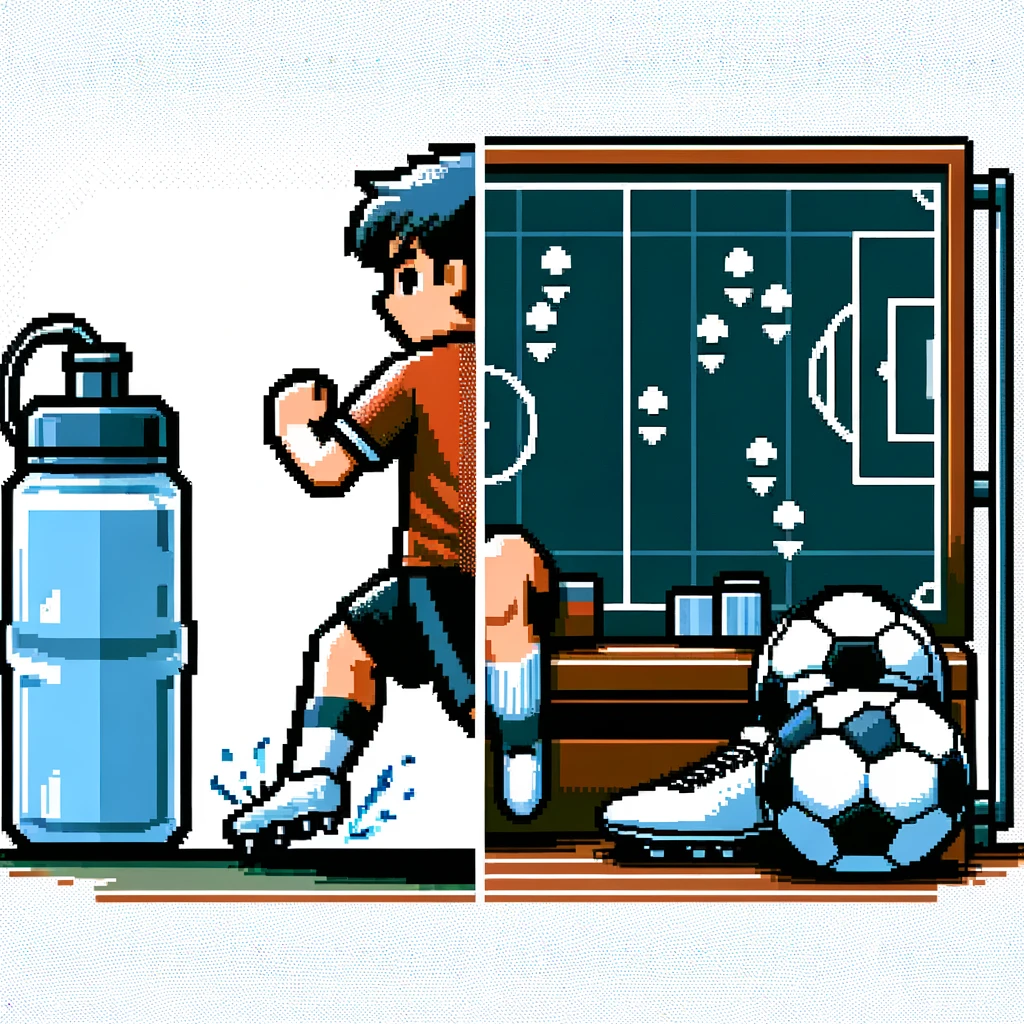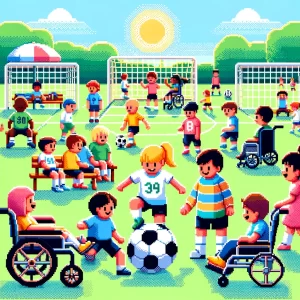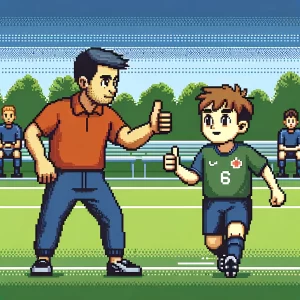
Physical Fatigue and Its Impact on Players
Understanding how physical fatigue impacts performance is crucial for both coaches and players. A recent study sheds light on this intricate relationship, focusing on how acute physical fatigue influences peripheral perception, tactical behavior, and physical performance in soccer players. Let’s explore the findings and their implications for soccer coaching and player development.
The Study at a Glance
Researchers experimented with 24 trained soccer players from two Brazilian clubs, averaging 18.6 years old. They used the TSAFT90 test to induce acute physical fatigue and measured various performance aspects before and after the test. Here’s a simplified breakdown of what they discovered:
- Peripheral Perception: Surprisingly, physical fatigue did not affect players’ peripheral perception. This means that even when tired, players could still effectively gather and interpret visual information from their surroundings.
- Tactical Behavior: Physical fatigue influenced how players executed tactical principles. There were improvements in offensive coverage, width and length with the ball, and concentration. However, there was a decrease in the number of tactical actions for offensive coverage and recovery balance.
- Physical Performance: Under fatigue, players covered less distance, had lower average speed, performed fewer sprints, and had fewer accelerations and decelerations.
Breaking Down the Findings
Peripheral Perception Unaffected
Peripheral perception is the ability to see and respond to stimuli outside the central vision. For soccer players, this skill is vital for monitoring the positions of teammates and opponents. The study found that acute physical fatigue did not significantly impact this ability. Despite the demanding nature of the TSAFT90 test, players maintained their peripheral vision capabilities.
Implications: Coaches can be reassured that even during the latter stages of a match, players’ peripheral awareness remains intact. Training sessions can continue to emphasize exercises that develop this skill without the added concern of physical fatigue diminishing its effectiveness.
Tactical Behavior Adjustments
Fatigue led to notable changes in tactical behavior. Players showed improved efficiency in certain offensive principles, like maintaining width and length with the ball and concentrating on the play. This suggests that when physically tired, players might adopt a more conservative and strategic approach to maintain possession and manage their energy better.
However, the number of tactical actions, especially in offensive coverage and recovery balance, decreased. This indicates that while players might perform certain tasks more efficiently, they engage in fewer actions overall.
Implications: Coaches should design training sessions that mimic these conditions, preparing players to maintain tactical discipline under fatigue. Emphasizing strategic positioning and efficient use of energy can help players perform better in real match scenarios.
Decline in Physical Performance
As expected, physical fatigue significantly reduced physical performance. Players covered less distance, had lower average speeds, and performed fewer high-intensity actions like sprints and accelerations. This decline is critical as it directly affects the ability to execute tactical decisions that require quick, intense movements.
Implications: Conditioning programs should focus on enhancing players’ endurance and resilience to fatigue. High-intensity interval training (HIIT) and other endurance-building exercises can help players sustain performance levels throughout the match.
Practical Coaching Strategies
Given these findings, here are some practical strategies coaches can implement:
- Emphasize Efficient Tactical Training: Since players tend to perform more efficiently under fatigue, coaches can focus on drills that enhance tactical awareness and decision-making under pressure. Small-sided games that simulate match conditions can be particularly effective.
- Endurance and Conditioning: Incorporate endurance training into regular practice routines. This will help players maintain physical performance even when fatigued, ensuring they can execute tactical actions effectively throughout the game.
- Strategic Rest and Recovery: Educate players on the importance of rest and recovery. Proper nutrition, hydration, and sleep are essential to help players recover from intense training sessions and matches.
- Adaptive Training Sessions: Develop training sessions that gradually increase in intensity, mimicking the physical demands of a match. This prepares players for the fatigue they will experience during actual games and helps them adapt their strategies accordingly.
Your thoughts!
Consider these questions in the comments!
- How do you think improving peripheral perception can impact a player’s overall performance on the field?
- What strategies have you found effective in managing player fatigue during matches?
Conclusion
Understanding the effects of acute physical fatigue on soccer players provides valuable insights for improving training and performance. By focusing on efficient tactical behavior and enhancing physical endurance, coaches can help players maintain high performance levels even under fatigue. This research underscores the importance of adaptive training methods and strategic game management in the world of soccer.
Advance Your Soccer Knowledge:
Join the elite circle of soccer aficionados who appreciate the game beyond the field. ‘This Week in Soccer’ bridges the gap between complex soccer analytics and practical application. By subscribing to our newsletter, you’ll gain access to exclusive content, infographics, and forums that will enrich your understanding and love for soccer. Embrace the science and strategy of soccer today. Subscribe and transform your perspective!
About the Author
Jon Scaccia is a youth soccer coach and translational scientist. He has worked with the Exeter United Soccer Club for over five years, focusing on U5 development. In his day job, he works in data evaluation and implementation science.



